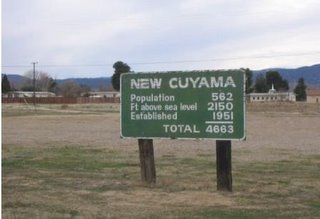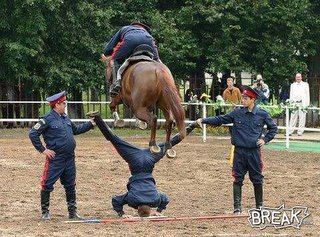Tuesday, December 06, 2005
'The CBS Daily Show With Jon Stewart'
Frankly--and frighteningly, considering that I spent seven of the best years of my life as Paris correspondent for CBS News--it wasn't all that difficult to imagine. First, let's put ourselves in the place of the average Evening News viewer. He or she is somewhere north of 50 years old (probably considerably north) and has been watching it since Walter Cronkite (remember him, kids? Probably not) was in the anchor chair. So suddenly these ancestral viewers would have to find an alternative. It wouldn't be all that hard. All these network news shows look pretty much alike.
Perhaps they'd settle on Brian Williams--a nice enough fellow, adequately blow-dried and with a refined sensibility, if last week's reports from New Orleans were any indication. Or they could try The Walt Disney Co.'s (nyse: DIS - news - people ) ABC News, which just named the virtually interchangeable Elizabeth Vargas and Bob Woodruff as co-anchor successors to Peter Jennings. And there's always the likes of Wolf Blitzer and Anderson Cooper on Time Warner's (nyse: TWX - news - people ) CNN or, let's not leave them out, Brit Hume and Shepard Smith on News Corp.'s (nyse: NWS - news - people ) Fox News Network, or Keith Olbermann and Rita Cosby on General Electric's (nyse: GE - news - people ) MSNBC.
Would anyone really notice if there were simply five evening news broadcasts instead of six? CBS News, as it's now constituted, might think so. I'm not so sure. So let's see what burying the Evening News might do for CBS News.
At one point, CBS, now part of Viacom, (nyse: VIA.B - news - people ), had the largest corps of foreign and domestic correspondents and the largest bureau system of any television news gathering operation on the planet. When I was based in Paris, in any given week I could be shipped off to any one of three continents. I recall one particularly frenetic day, when they thought a boat had gone down with a load of plutonium, when I was in four countries in a single 24-hour period. That just doesn't happen any more--not at CBS, not in any other network news operation. It's way too expensive.
Still, today's pared-to-the-bones CBS could save quite a lot more money by going The Daily Show route. First, comedy writers earn a lot less than senior producers or correspondents on a network evening news show. You might want to hold on to a few such correspondents and producers just in case the pope dies or the president gets shot or there's some other history-altering moment and you want do something more elaborate than simply poke fun at it, as Jon Stewart does so effectively on Comedy Central. Still, you don't need to have a whole regiment of correspondents, producers and camera crews suited up and ready to go 24/7.
Moreover, The Daily Show even has the beauty of being owned by Comedy Central, which is owned by Viacom, which owns CBS.
Finally, you don't need to jump through hoops to find creative means to keep this whole infrastructure humming along profitably. That's because there won't be any such infrastructure.
Turn The Morning Show over to the entertainment division, which does cooking shows and movie promos better anyway. Sunday Morning, 60 Minutes and Face the Nation can continue to totter along on their own without a whole bureau system and news infrastructure. I mean, they're not even located in the main Broadcast Center on West 57th Street, though without that huge news operation to house, they might be able to move back into the home of the mother ship and save CBS a bundle on off-site rental costs.
At the same time, you could also shutter both domestic and foreign assignment desks, lose a half-dozen vice presidents and even sell off CBS Radio to some place like Clear Channel Communications (nyse: CCU - news - people ), or Sirius Satellite Radio (nasdaq: SIRI - news - people ), where it might nicely complement Howard Stern--after all, he'll have two 24-hour networks to fill seven days a week come January. NBC shed its radio operation years ago.
All of this is said with a hearty expectation--indeed hope--that none of this will come to pass. I was present at the creation of the present iteration of CBS News in 1987, and I can attest to the fact that it was a crushingly revolutionary change. That was when Larry Tisch bought CBS and undertook a little profit-margin improvement, laying off 300 people, closing down a dozen news bureaus and effectively eviscerating the platinum standard of broadcast news, which was never quite the same again.
Still, one can only wonder what it might sound like when 6:30 P.M. rolls around on the East Coast and the booth announcer solemn intones, "This is The CBS Daily Show With Jon Stewart. Say, did you hear the one about..."
from www.forbes.com
The Longest-Standing Math Problem
Pierre de Fermat, a famous number theorist of the 17th century, rarely published his work – instead, he would often write comments in the margins of books. In one margin Fermat proposed that xn + yn = zn has no non-zero integer solutions for x, y and z when n > 2. However, rather than providing a proof, he only offered this taunting sentence: “I have discovered a truly remarkable proof which this margin is too small to contain.”
The proof for this simple conjecture was not solved for over 350 years and through the centuries became one of math's greatest puzzles.
Fermat's Last Theorem has entranced so many mathematicians due to its duality between simplicity and difficulty. It is easy to understand yet almost impossible to prove or disprove. That Fermat claimed to have a proof made it all the more intriguing. Mathematicians made some progress over the centuries in proving the correctness of the theorem for certain values of n – but this was hardly enough to prove that the theorem was correct for all values of n.
Then came along Andrew Wiles. As a child Wiles loved doing math problems. When he was ten he came across Fermat's Last Theorem which was, at the time, unsolved for 300 years. "It looked so simple, and yet all the great mathematicians in history couldn't solve it," said Wiles. "I had to solve it."
Wiles quickly became obsessed with solving the problem. Throughout his teenage and college years he worked on it, using his own methods and that of the mathematicians who had worked on it before him. However, when he became a research student he decided to put the problem aside. Wiles realized that current techniques could not solve the problem and that one could spend years without making any progress. Also, a proof of Fermat's Last Theorem would be completely useless to mathematics – it would not lead to anything useful for mathematicians. Instead, he went on to study elliptical curves at Cambridge.His study of elliptical curves would prove useful, for in 1986 a new possibility was presented to Wiles. Ken Ribet linked Fermat's Last Theorem to another unsolved problem, the Taniyama-Shimura conjecture, which happened to be about elliptical curves. If one conjecture was true, both were – thus, if Wiles could prove the Taniyama-Shimura conjecture, he could prove Fermat's Last Theorem as well.
From that moment on he was determined to solve the riddle. He dropped all other projects he was working on and concentrated on the Taniyama-Shimura conjecture – in secrecy and isolation. “I realized that anything to do with Fermat's Last Theorem generates too much interest. You can't really focus yourself for years unless you have undivided concentration, which too many spectators would have destroyed.” His wife did not even know that he was working on the problem until he told her during their honeymoon.
Wiles worked on the problem alone for seven years. He devoted all of his time to working on the proof, the only exception being spending time with his family. He had a few breakthroughs but not a complete proof until one day in spring of 1993 in which he had the idea of examining the elliptical curves from the prime five instead of the prime three. Working feverishly (and forgetting to eat lunch), Wiles went to his wife that afternoon saying he had the proof.
Wiles introduced the proof in a series of three lectures which made no mention of Fermat's Last Theorem, but rather of elliptical curves. However, the audience realized by the end of the third lecture what Wiles was leading them towards. Once Wiles had finished his proof of the Taniyama-Shimura conjecture, he put Fermat's Last Theorem on the board then concluded saying, “I think I'll stop there.”
Wiles gained instant fame for having developed a solution to Fermat's Last Theorem. However, soon Nick Katz discovered that there was an error in a key section of his original proof. This setback proved difficult for Wiles to overcome, and none of the methods he tried could solve the error. He was about to give up when he re-examined his original (though discarded) method and found that there was actually a way to use it to resolve his mistake. “It was so indescribably beautiful,” said Wiles about the moment he solved the problem. “It was so simple and so elegant, and I just stared in disbelief for twenty minutes.” Thus, in 1994 the final proof of Fermat's Last Theorem was complete, weighing it at 200 pages, more complex than most people can understand.
The full riddle, however, is still not completely solved, for it remains unknown whether Fermat ever really had a brilliant proof to his conjecture. Fermat could not have thought of Wiles' proof – Wiles says that, "the techniques used in this proof just weren't around in Fermat's time." With the many mathematicians who had thought they'd solved it in the past, it is possible that Fermat deluded himself as well – but a simpler solution may still exist. Wiles, however, is content with his difficult proof - “I had this very rare privilege of being able to pursue in my adult life what had been my childhood dream.”
from www.damninteresting.com


























